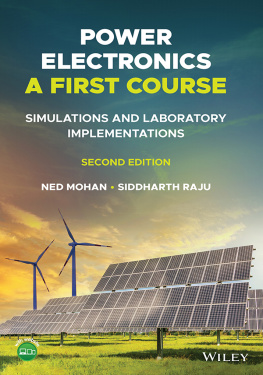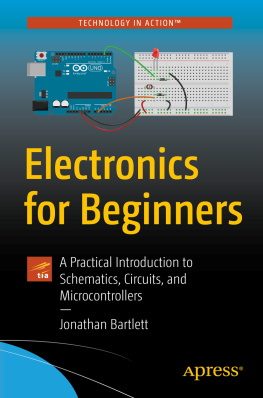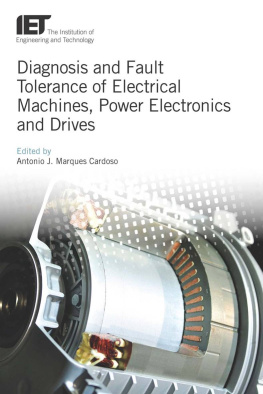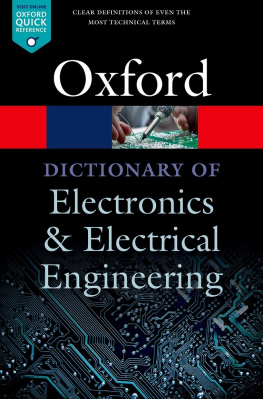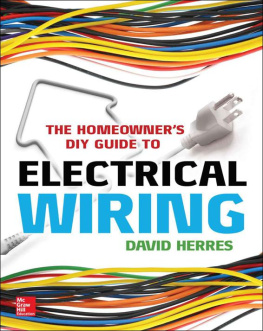
Copyright 2014 by McGraw-Hill Education. All rights reserved. Except as permitted under the United States Copyright Act of 1976, no part of this publication may be reproduced or distributed in any form or by any means, or stored in a data base or retrieval system, without the prior written permission of the publisher.
ISBN: 978-0-07-180800-2
MHID: 0-07-180800-0
The material in this eBook also appears in the print version of this title: ISBN: 978-0-07-180799-9, MHID: 0-07-180799-3.
E-book conversion by Codemantra
Version: 1.0
All trademarks are trademarks of their respective owners. Rather than put a trademark symbol after every occurrence of a trademarked name, we use names in an editorial fashion only, and to the benefit of the trademark owner, with no intention of infringement of the trademark. Where such designations appear in this book, they have been printed with initial caps.
McGraw-Hill Education books are available at special quantity discounts to use as premiums and sales promotions or for use in corporate training programs. To contact a representative, please visit the Contact Us page at www.mhprofessional.com.
Information contained in this work has been obtained by McGraw-Hill Education from sources believed to be reliable. However, neither McGraw-Hill Education nor its authors guarantee the accuracy or completeness of any information published herein, and neither McGraw-Hill Education nor its authors shall be responsible for any errors, omissions, or damages arising out of use of this information. This work is published with the understanding that McGraw-Hill Education and its authors are supplying information but are not attempting to render engineering or other professional services. If such services are required, the assistance of an appropriate professional should be sought.
TERMS OF USE
This is a copyrighted work and McGraw-Hill Education and its licensors reserve all rights in and to the work. Use of this work is subject to these terms. Except as permitted under the Copyright Act of 1976 and the right to store and retrieve one copy of the work, you may not decompile, disassemble, reverse engineer, reproduce, modify, create derivative works based upon, transmit, distribute, disseminate, sell, publish or sublicense the work or any part of it without McGraw-Hill Educations prior consent. You may use the work for your own noncommercial and personal use; any other use of the work is strictly prohibited. Your right to use the work may be terminated if you fail to comply with these terms.
THE WORK IS PROVIDED AS IS. McGRAW-HILL EDUCATION AND ITS LICENSORS MAKE NO GUARANTEES OR WARRANTIES AS TO THE ACCURACY, ADEQUACY OR COMPLETENESS OF OR RESULTS TO BE OBTAINED FROM USING THE WORK, INCLUDING ANY INFORMATION THAT CAN BE ACCESSED THROUGH THE WORK VIA HYPERLINK OR OTHERWISE, AND EXPRESSLY DISCLAIM ANY WARRANTY, EXPRESS OR IMPLIED, INCLUDING BUT NOT LIMITED TO IMPLIED WARRANTIES OF MERCHANTABILITY OR FITNESS FOR A PARTICULAR PURPOSE. McGraw-Hill Education and its licensors do not warrant or guarantee that the functions contained in the work will meet your requirements or that its operation will be uninterrupted or error free. Neither McGraw-Hill Education nor its licensors shall be liable to you or anyone else for any inaccuracy, error or omission, regardless of cause, in the work or for any damages resulting therefrom. McGraw-Hill Education has no responsibility for the content of any information accessed through the work. Under no circumstances shall McGraw-Hill Education and/or its licensors be liable for any indirect, incidental, special, punitive, consequential or similar damages that result from the use of or inability to use the work, even if any of them has been advised of the possibility of such damages. This limitation of liability shall apply to any claim or cause whatsoever whether such claim or cause arises in contract, tort or otherwise.
About the Author
Stan Gibilisco, an electronics engineer and mathematician, has authored multiple titles for the McGraw-Hill Demystified and Know-It-All series, along with numerous other technical books and dozens of magazine articles. His work has been published in several languages.
Introduction
Have you ever felt lost when choosing a home entertainment system, wondered how to test an electrical outlet to see if its grounded, or puzzled over how to make the Wi-Fi in the front room reach the back? If so, read on!
Heres a question that people occasionally ask me, and that baffles me as much as it does them: What is electricity, really? Ill never forget the day my eighth-grade science teacher showed the class a celluloid movie of a lecture where a professor concluded by saying, We learn about electricity not by knowing what it is, but by codifying what it does. I adopted that attitude as I set out to write this book as a how-to guide for nontechnical people who want to learn more about home and automotive electrical and electronic systems, and in particular, what makes them tick (or not).
Youll find out why things sometimes fail, and Ill offer you some solutions to common problems (and tips on how to avoid them). Youll find sidebars to clear up points of confusion and offer targeted bits of advice. In the last chapter, Ill suggest some projects for those of you who might like to try out some off-the-wall projects and experiments. In the back of the book, youll find a glossary that defines common terms in easy-to-understand language.
I welcome your suggestions for future editions. Please visit me on the Web at www.sciencewriter.net .
Stan Gibilisco
CHAPTER
Lets Start with the Basics
Electronic devices and systems have changed peoples lives more in the past century than all prior inventions and events did, going back to prehistoric times. If you dont believe me, wait until you have to live through a long power outage in the wake of a hurricane, earthquake, or wildfire! Sooner or later youll start to wonder if the Stone Age might be about to come back for good. Whats behind all these marvels that present such a tenuous barrier between comfort and chaos? Lets find out what makes them work.
Direct Current
All matter comprises countless tiny particles called atoms. Individual atoms are made up of smaller particles known as protons, neutrons, and electrons.
Protons and neutrons are smaller than any ordinary microscope can see, and they have phenomenal density. A pebble-sized lump of compacted protons or neutrons would weigh so much that it would fall through the floors of your house and bore into the earth as if rock were butter.
In an atom, the protons and neutrons always exist in a clump called the nucleus. (Hydrogen in its most abundant form serves as the lone exception; its whole nucleus is only one proton, all alone.)
Electrons are much less dense than protons or neutrons, and they move a lot more. Electrons can orbit around a single nucleus, wander among many different nuclei, or hurtle freely through space.

Did You Know?
Protons and electrons carry equal and opposite electric charge. Scientists consider protons as electrically positive, and electrons as electrically negative. These charge polarity definitions came about as a coincidental result of observations made long ago in simple experiments.
Next page

